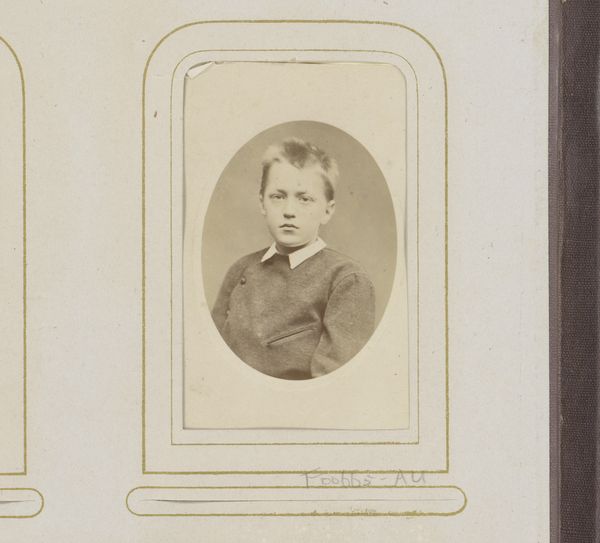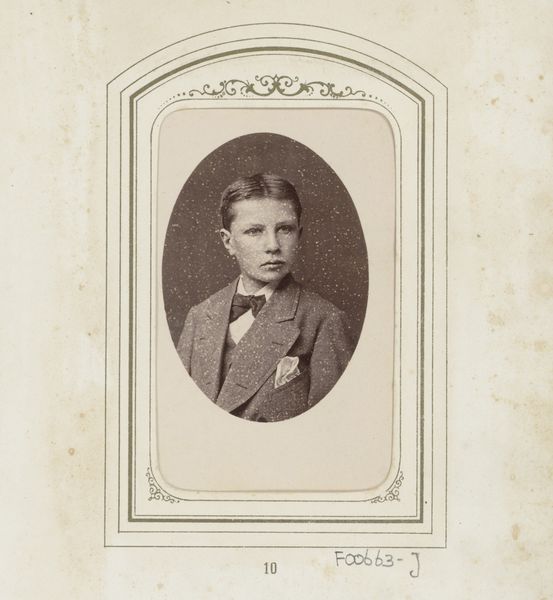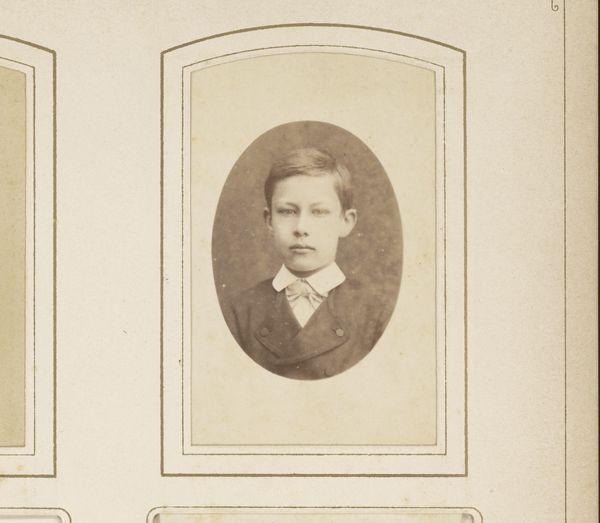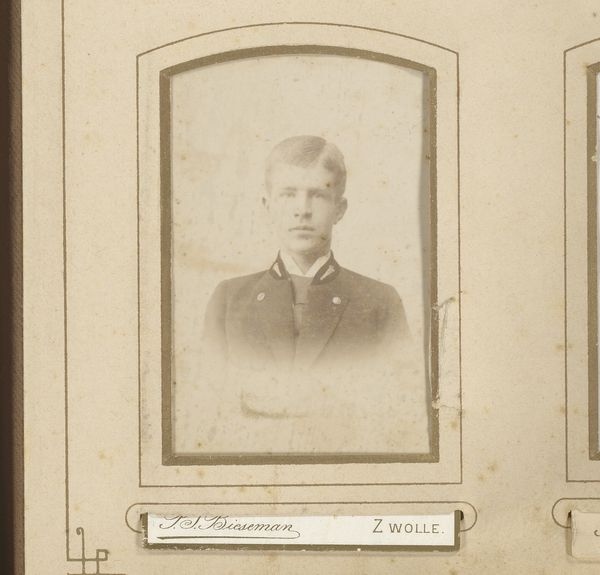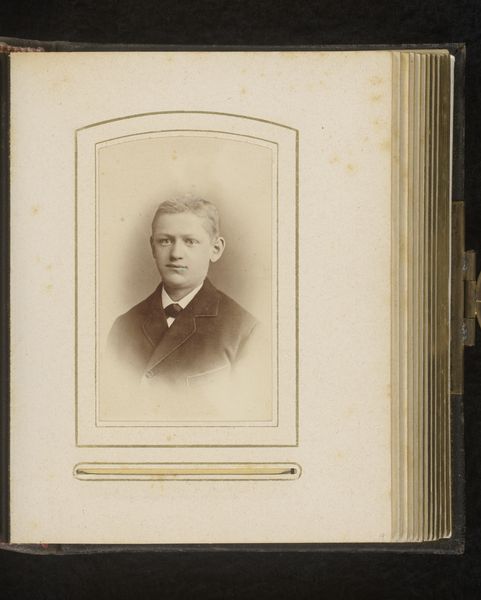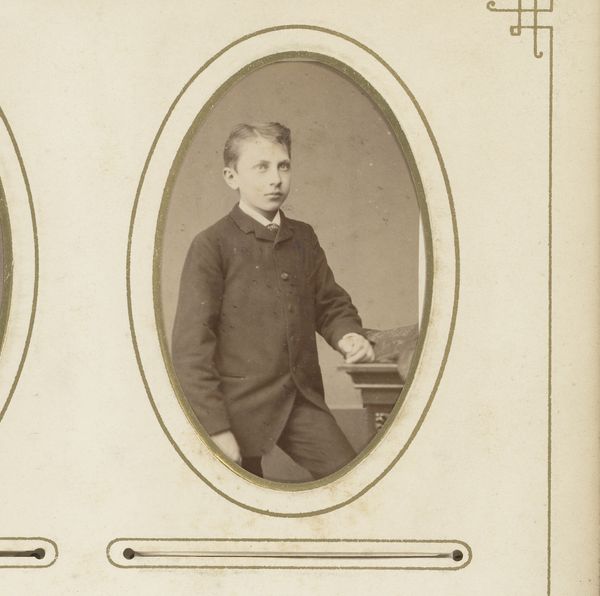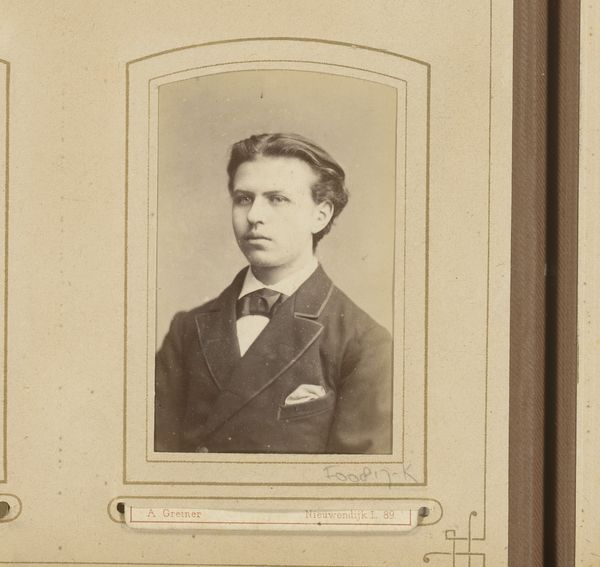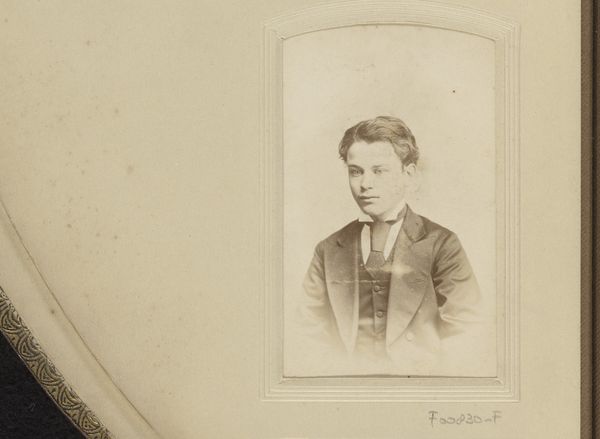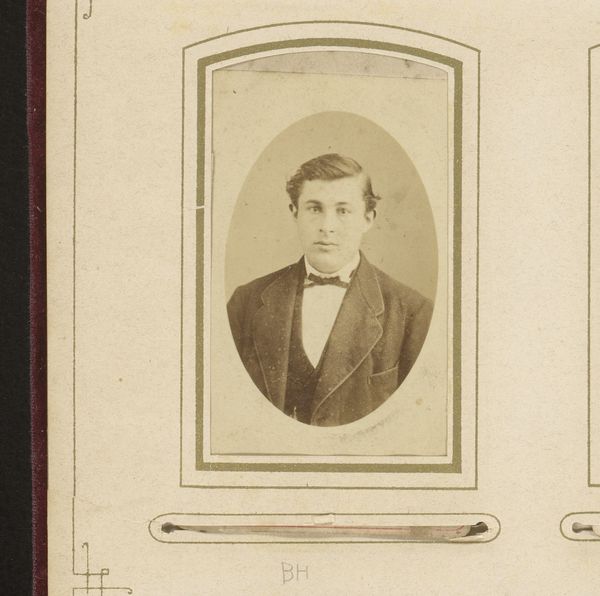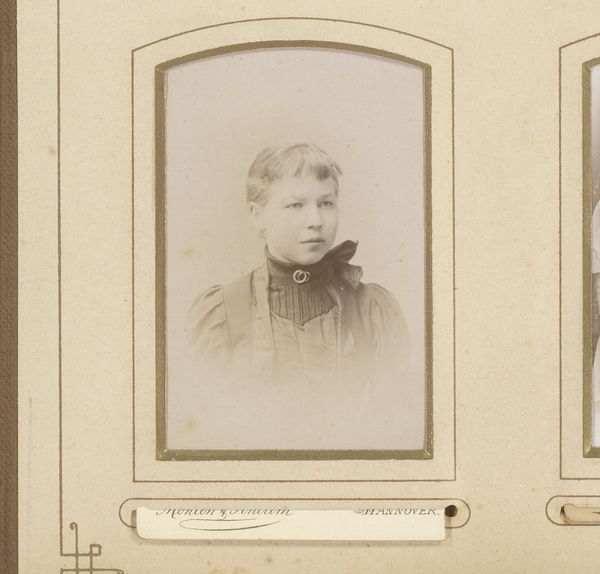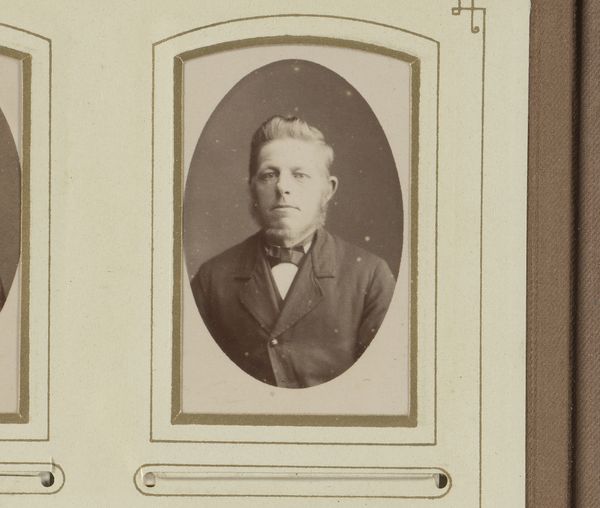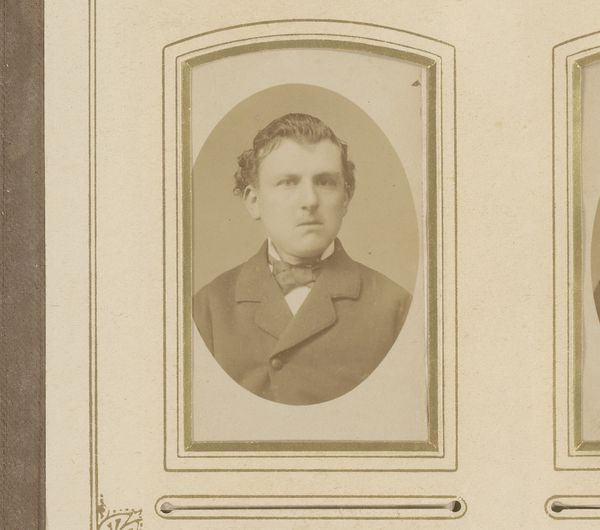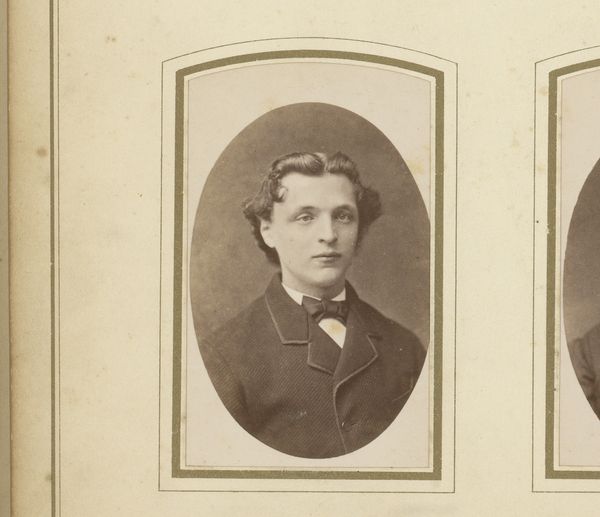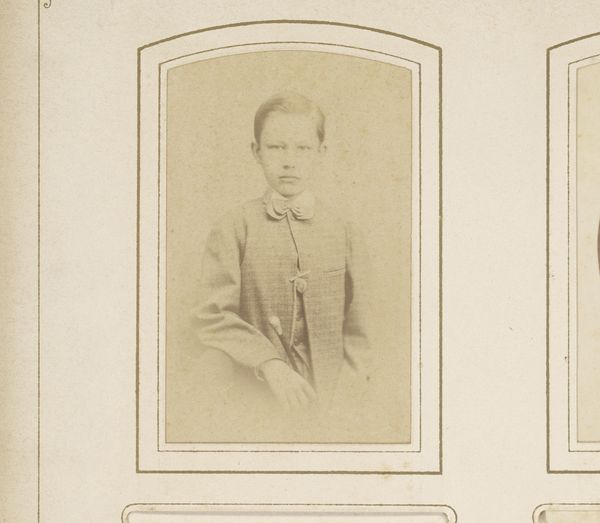
photography, gelatin-silver-print
#
portrait
#
photography
#
historical photography
#
gelatin-silver-print
#
19th century
#
realism
Dimensions: height 87 mm, width 53 mm
Copyright: Rijks Museum: Open Domain
Curator: Here we have a captivating gelatin-silver print dating from between 1874 and 1900. It’s titled “Portret van een jongen” which translates simply to “Portrait of a Boy”. The artist, Cornelis Bernardus Broersma, really captured the likeness of this young subject. Editor: He has such a wistful expression! I can almost feel the weight of the era, of stuffy parlors and endless expectations pressing down on those young shoulders. And the monochrome, it makes everything feel somehow… removed. Curator: The monochromatic effect, so common with early photographic processes like gelatin-silver printing, arose from its specific chemical make-up and development practices, which certainly influences our reading of the subject's class and societal status through dress codes and popular consumption of these types of commodities. The development process itself, and the materials used, are as vital to its essence as the pose of the boy himself. Editor: Absolutely, you can see it almost feels mass-produced and intimate all at once—that stark juxtaposition that speaks volumes. All those tiny specks of silver forming an image; magic, almost! But restricted. Curator: Yes, it's fascinating how this photographic realism simultaneously aimed for objectivity, while the material choices – from the type of paper to the chemicals used in development - inherently shaped the final representation. Think about the labour involved, too – the photographer, the technicians preparing the plates. Editor: And don't forget the boy's labour! He’s acting out a role too, you know? Stiff, proper, "respectable". Makes you wonder what he’d have been like off-camera, throwing stones, perhaps. Curator: The context, I think, really makes one realize the way the camera captured images, dictated certain material relationships. It's not just about an aesthetic of realism. This work demonstrates both that process and a social code. Editor: Beautifully put! I suppose what resonates with me, beyond any intellectual understanding, is just how universal this child's face is, in the past, present, and the possible futures too. Curator: Indeed. Reflecting upon the image within its materiality provides deeper perspective regarding process and context. Editor: It makes you realize we're all still connected, by fleeting emotions preserved by ingenuity.
Comments
No comments
Be the first to comment and join the conversation on the ultimate creative platform.
